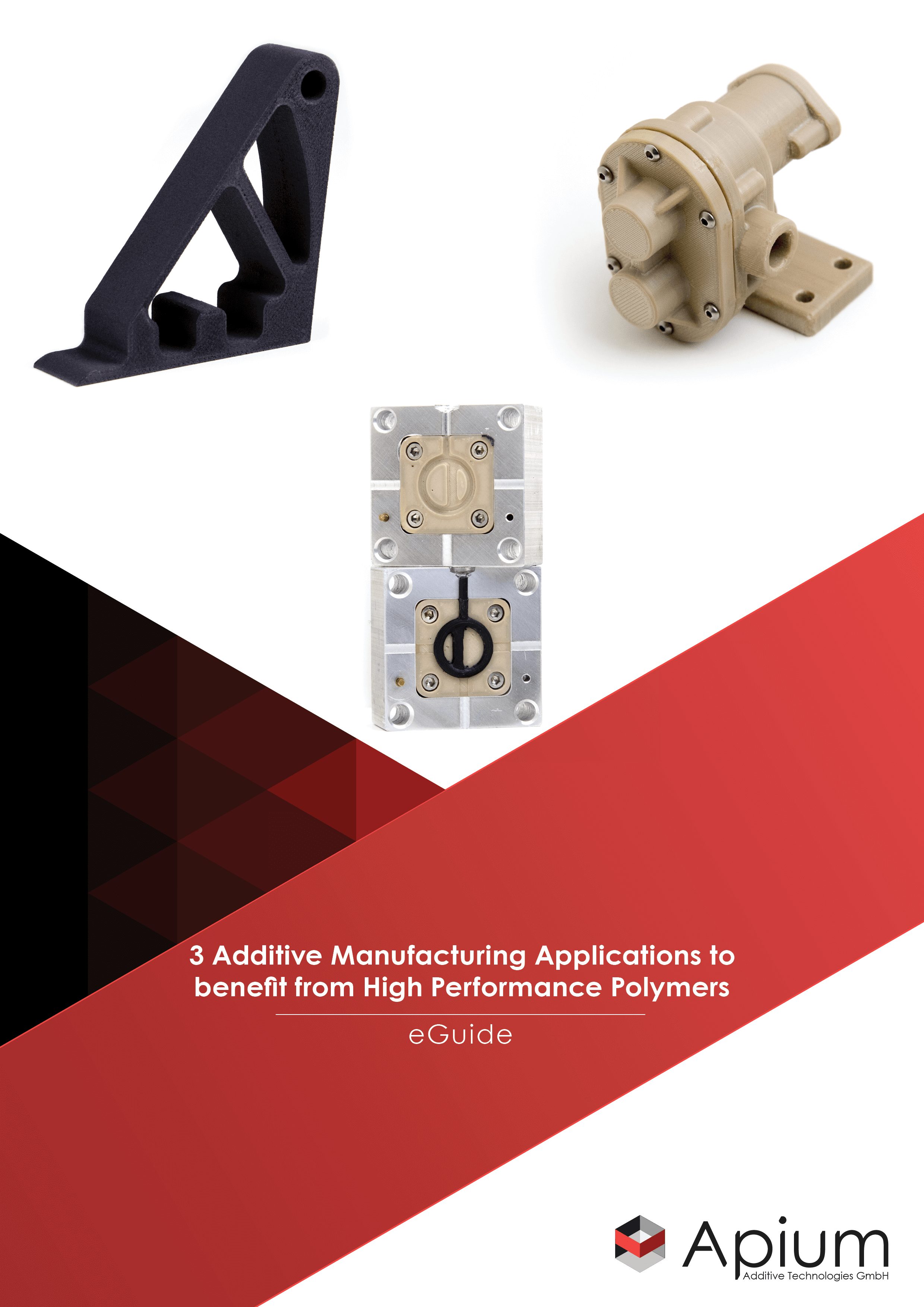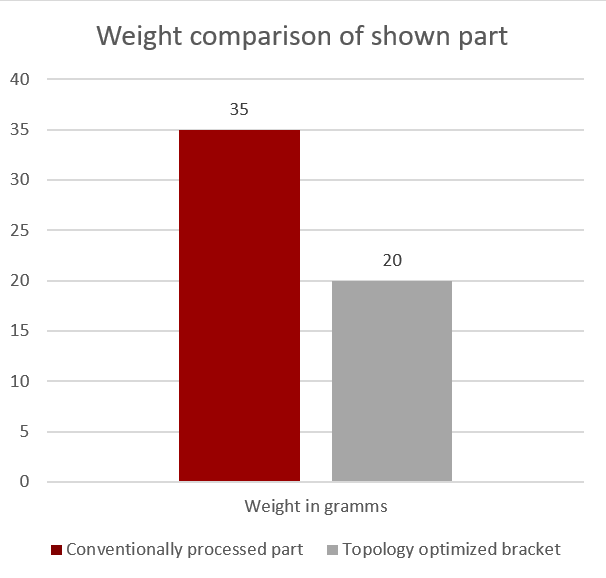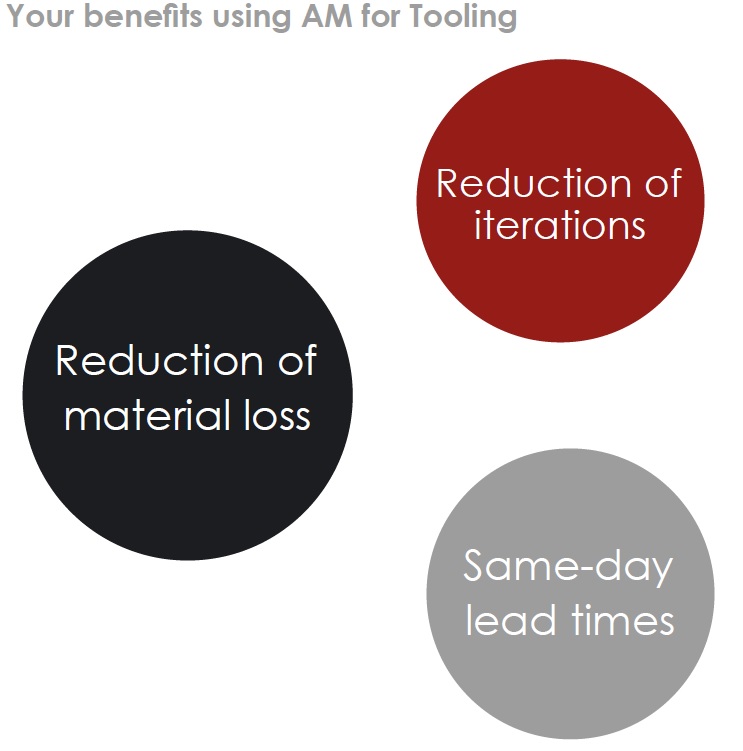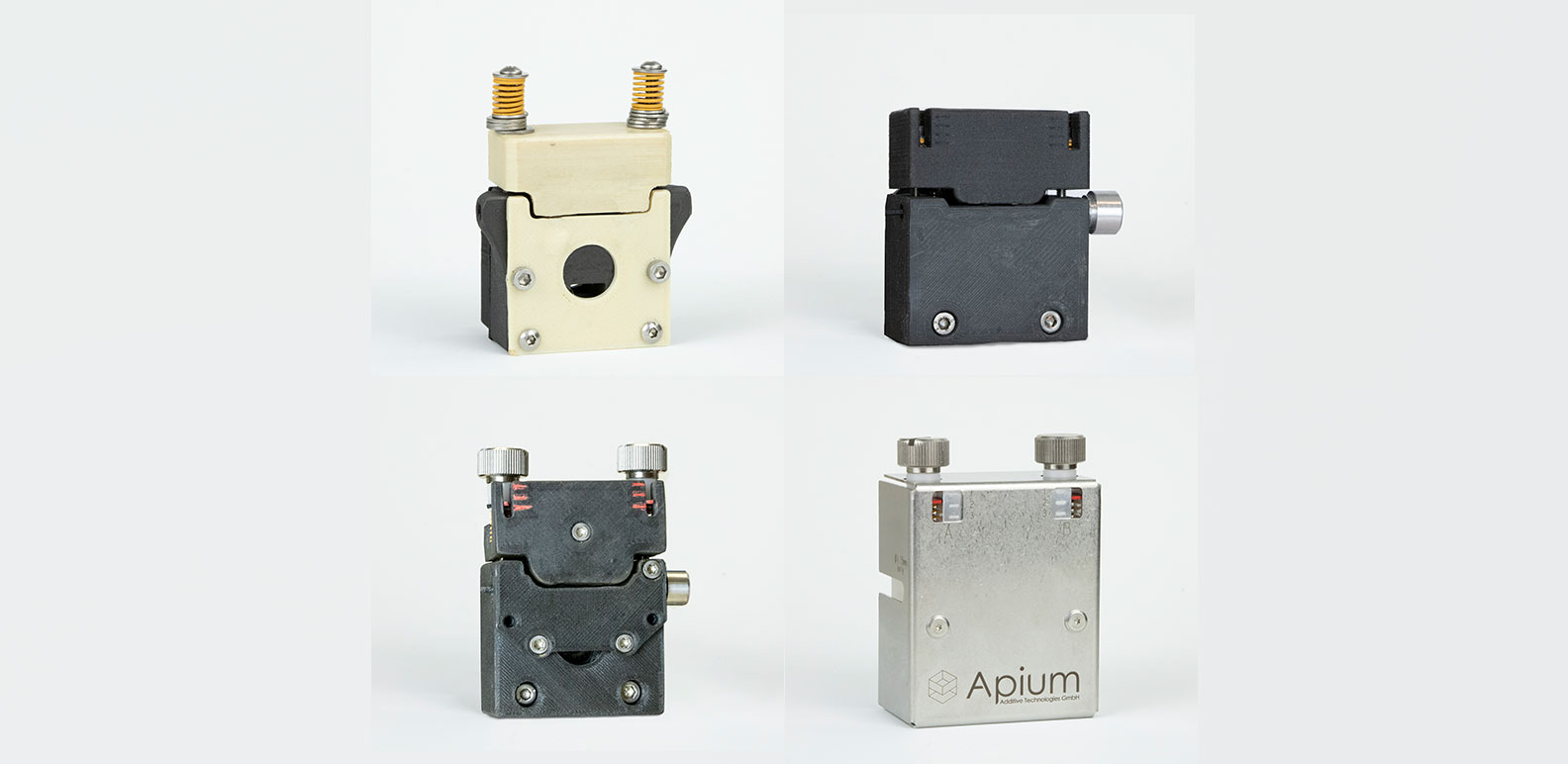3 Additive Manufacturing Applications to benefit from High Performance Polymers
Discover the benefits of 3D printing with real-world cases from industry and research.

Additive Manufacturing vs. Conventional Processing Methods
The introduction of both neat and reinforced high performance thermoplastics to the additive
manufacturing (AM) materials portfolio has made it possible for industries having higher product
quality and performance requirements to implement 3D printing in their workflow. Apium PEEK
450, CFR PEEK and PEI 9085 (ULTEM) are leading materials for industrial 3D printing. Using additive
manufacturing within a value chain, either as a separate or as a hybrid production tool, can
markedly increase productivity or accelerate a company’s growth.
In recent times there has been a lot of interest in AM from industrial companies for reasons based
on cost and time-to-market. Some of the industrial companies share similar challenges posed by
conventional manufacturing methods. Such challenges border on:
• High costs and long delivery lead times for parts with complex geometries and inner channels
• Difficulties in design iteration testing for functional integration of components
• High costs for small quantities or customized production
The goal of this write-up is to highlight some specific part applications and ways by which Materials
Extrusion (FFF) 3D printing technology in combination with high performance materials can be
advantageously used to optimise fabrication output.
Three Additive Manufacturing Applications to benefit from

Rapid prototyping using AM
Additive Manufacturing Application No.1: There is now demonstrable evidence that it is possible to shorten the Innovationcycles
in intelligent process chains of R&D infrastructures. This means that companies can now react faster to changing requirements and technological developments in order to strengthen
their competitiveness. Most conventional manufacturing methods (i.e. non-AM methods) are generally designed for large production quantities and are often times technically too static for use in early product-phases. Thus, even with the often rather high investment costs associated with rapid prototyping using conventional methods there still exists a great possibility of
improving the overall business efficiency for companies.
A typical application is rapid prototyping in the area of motorsports where the general rule is to have an agile product development strategy. This makes it possible to effectively pursue optimisation of complex engineered components through multiple experimental iterations.
The general flexibility of AM technologies such as FFF; especially the ability to fabricate variations of parts and geometries using a single tool often in a single production step, together with
high performance polymers can result in enormous savings on costs and time. This
makes it possible to promptly implement modifications in prototypes and transit to
series production.
Rapid prototyping with short lead times
Short experimental design iterations
Complex engineered components
Lightweight production using AM
Additive Manufacturing Application No.2: Using Apium PEEK and 3D Printing technology it is possible to fabricate from designs
conceived for light-weight applications. This advantage is creditable to the fact that
PEEK can potentially replace metals in a wide range of applications where mechanical
performance is not compromised at the expense of lightweight over a range of
temperatures (typically -196°C to 260°C).
3D Printed PEEK parts can be fabricated with infill structures, which allow for materials
savings and short printing times thus making the concept of lightweight fabrication highly
economical. Such savings driven engineering concept begins with the creation of
computer-aided designs, which focus on organic geometries and voided architectures
within the volume of the parts as well as effectively using the rules of design freedom
offered by 3D printing technologies.
Topology optimisation at an
aerospace application results in
weight reduction and optimised
stiffness
It is also possible to increase the overall efficiency of engineering components subjected to different mechanical loading conditions by using polymer based composite materials which exhibit lightweight properties. This class of material are often reinforced with carbon or glass fibre
generally showing high specific strength and appreciable mechanical stability at relatively high temperatures. The image shown a topologically optimised bracket manufactured using Apium CFR PEEK.


An example of this concept is given in Figure 1 where the geometric transformation from
the design with angular edge zones (Fig. 1a) to one with curved surfaces (Fig. 1b) results in
less internal stresses in the part, reduction in overall mass as well as a redistribution of the
forces on the body for light-weight.

This design results in a mass and weight reduction up to 43% of the part with an associated
optimisation of the stiffness as well as a modification of the natural frequency due to a
force-flow-compatible design.
Production of moulds and tooling using AM
Additive Manufacturing Application No.3: The production of complex injection moulding tools (mould block and inserts) using conventional manufacturing methods can be a very cost-intensive process. This is because machining of
complex mould tools requires highly advanced procedures and machine tools
with accompanying tool wear as well as other material losses.
1 Experimental mould design iterations
2 Easy feasibility of inner structure
3 Same-day lead times and independence from suppliers


Besides it may take several months of development for the moulds and tools due to iterations on design with no guarantee that a working design can be fabricated. For this reason, the process
technology may not attain a break-even point in production especially for batches of small to medium sizes. Material Extrusion 3D printing technology
addresses these challenges in mould tool manufacture making it possible for users to design and fabricate tools that are more efficient under production conditions.
A key advantage of this 3D printing technology is that internal structures for effective cooling of moulded parts can be introduced in the design then printed without additional expense on tooling.
This approach significantly reduces iterations, material loss and can offer same-day lead times depending on the size of the mould. An outcome of such a manufacturing choice is fast amortisation
and independency from suppliers. There is demonstrated evidence that 3D Printed mould inserts; made from Apium PEEK, destined for injection mould processing have been used successfully to
manufacture commercial amounts of parts.
Apium PEEK 450 offers:
• Tensile strength of 97 MPa
• Temperature resistant up to 260°C
• Corrosion resistance against all known
industrial solvents
• Chemically inert and sterilisable using
procedures in accordance to medical
practice.
This latter attributes makes Apium PEEK
especially interesting for the medical
industry for device manufacture (see
Apium M Series).

Apium also offers Apium PEI 9085 (ULTEM);
an unfilled engineering plastic with:
• High strength,
• Outstanding chemical resistance
• Temperature stability up to 200°C
PEI 9085 has similar properties as PEEK
but exhibits a lower impact strength and
thermal resistance; however it is relatively
cheaper than PEEK. These high end
polymeric materials can be effectively
processed using Apium P Series 3D Printers
to inserts for injection moulds.

Are you interested in more information? Contact us!
Subscribe for Apium News
Every month we inform you about our latest developments, 3D printing and high performance polymers.



